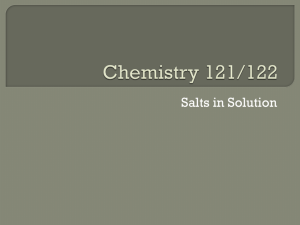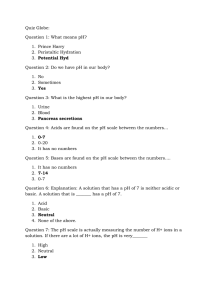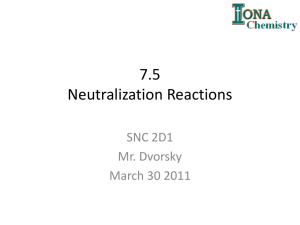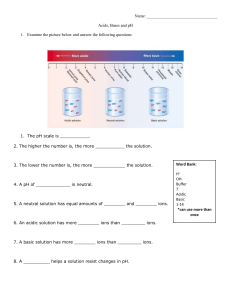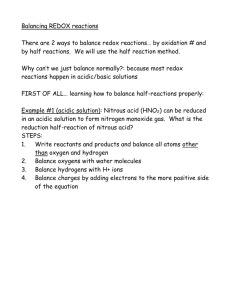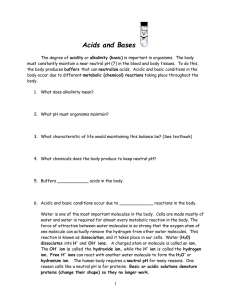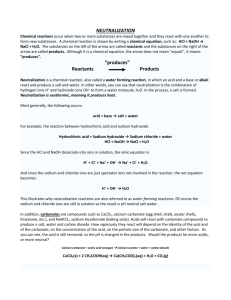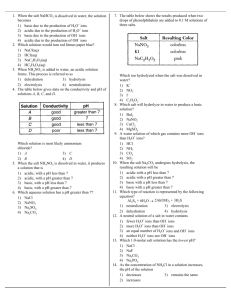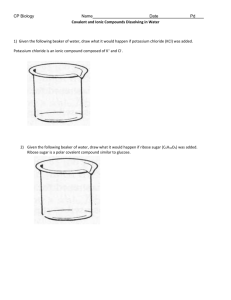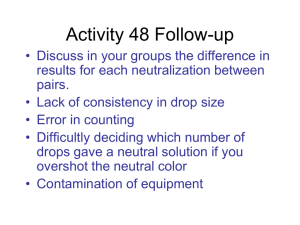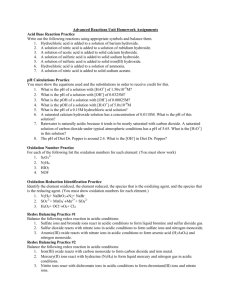pH scale & Neutralization
advertisement
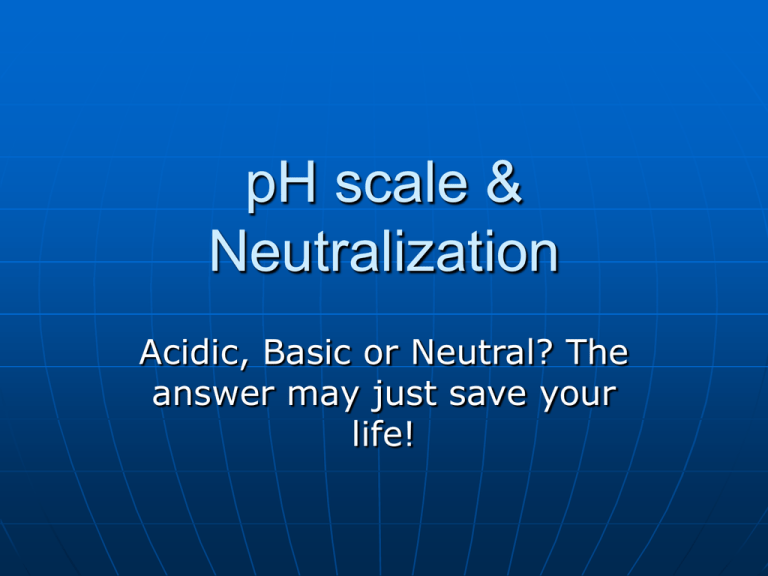
pH scale & Neutralization Acidic, Basic or Neutral? The answer may just save your life! pH The pH of a solution is a measure of the concentration of H+ ions in it. The greater the H+ concentration is, the lower the pH is and the more acidic the solution is The pH measures how acidic or basic a solution is. pH scale To indicate pH, a scale ranging from 0 to 14 has been devised. Solutions with a pH lower than 7 are described as acidic. pH scale: Basic Solutions with a pH greater than 7 are basic A solution with a pH of exactly 7 indicates that the concentrations of H+ ions and OH¯ ions are equal. These solutions are considered neutral. Neutralization Reactions Neutralization is a chemical reaction between an acid and a base that takes place in a water solution. For example, when HCI is neutralized by NaOH, hydronium ions from the acid combine with hydroxide ions from the base to produce neutral water. Salts! A salt is a compound formed when the negative ions from an acid combine with the positive ions from a base. In the reaction between HCl and NaOH the salt formed in water solution is sodium chloride. Salts! The following general equation represents acid-base reactions in water. Another neutralization reaction occurs between HCI, an acid, and Ca(OH)2, a base producing water and the salt CaCl2. Neutral! Another neutralization reaction occurs between HCI, an acid, and Ca(OH)2, a base producing water and the salt CaCl2
